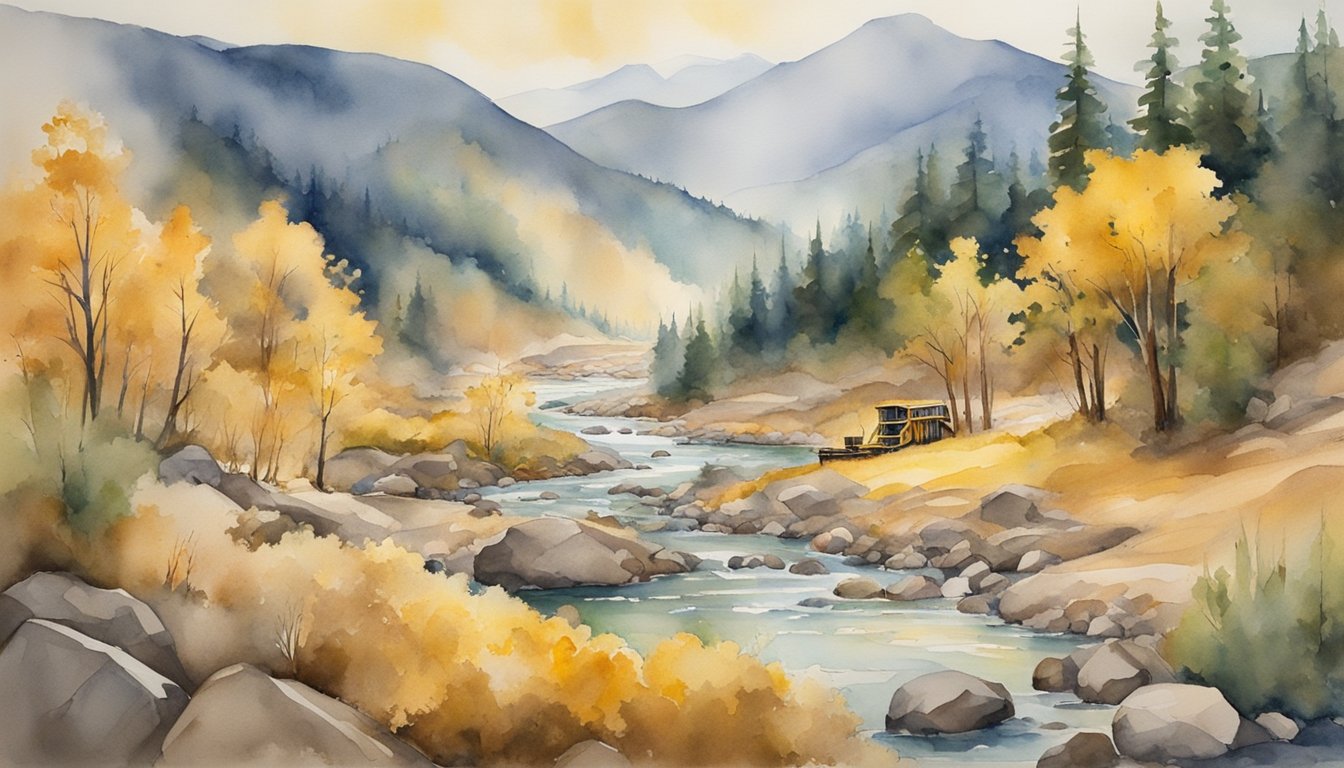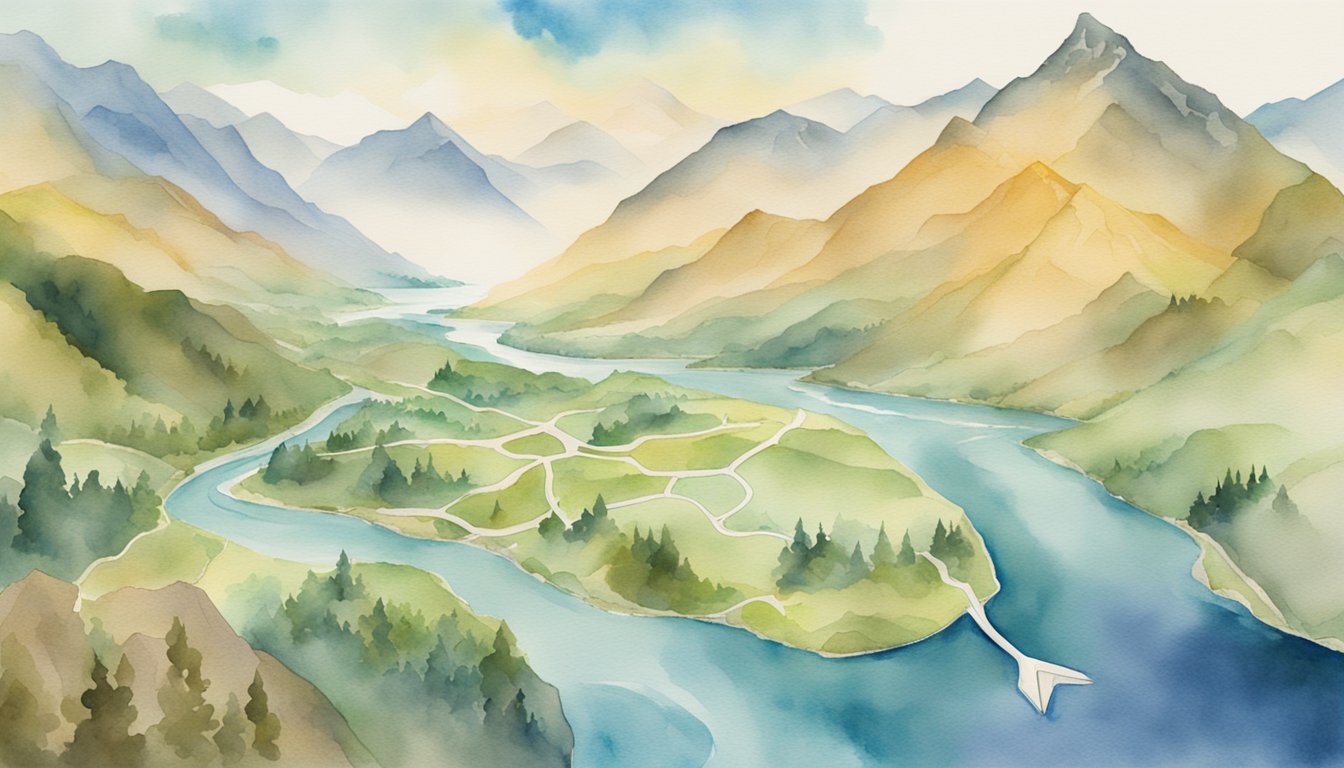Gold Prospecting Basics
Prospecting for gold can be as simple as grabbing a pan and heading to a local stream, but there is actually quite a bit of science and technique behind finding this precious metal. Many prospectors have been bitten by the gold bug, driven by the allure of discovery and the chance to hold a piece of the Earth’s history in their hands.
When starting out, panning for gold is the go-to method. It’s a low-cost, accessible way to get your feet wet in gold prospecting. They look for placer deposits—areas where gold has been eroded away and transported by water. These deposits are often found in rivers and streams. The key is to search in areas where gold-rich rocks are broken down by erosion and weathering.
Metal detectors and sluice boxes are also prospectors’ tools of the trade. These devices can uncover gold nuggets that are too big for panning. A sluice box uses water to separate heavier gold from other material, using a series of riffles to trap the gold. Panning and sluicing are both excellent first steps for anyone interested in trying their hand at gold prospecting.
- Panning: A gentle swishing motion in the pan can reveal gold flakes.
- Sluice Boxes: Positioning is key—place in areas of the stream with a strong current.
- Metal Detectors: Opt for a model that is designed specifically for finding gold nuggets.
One might think gold is found everywhere, but in reality, they would be better off targeting places where gold has been found before. A splash of enthusiasm, a sprinkle of patience, and a pinch of luck—these are the true secrets to a successful gold prospecting adventure.
United States Gold Locations

Treasure hunters and history buffs can relive the glory days of the Gold Rush by exploring the vast landscapes of the United States that continue to offer golden opportunities. From the iconic streams of California to the rugged terrains of Alaska, gold can still be found.
California Gold Adventures
California, the epicenter of the Gold Rush, invites enthusiasts to pan for gold in the same American River where it all began. One can visit historic mining towns and try their luck in areas where the precious metal first sparkled in the sun.
Alaska’s Rich Deposits
Venturing into Alaska, the Klondike Gold Rush still resonates in the waters of its many creeks. Places like Nome and Fairbanks provide an opportunity to sift through the icy streams and uncover hidden nuggets.
Prospecting in the Rockies
Heading to the Rockies, Colorado’s Cache Creek offers a picturesque backdrop for gold panning, sluicing, and dredging. They’re reminiscent of the state’s booming mining days with their rich veins and prospector history.
Finding Gold in the East
In North Carolina, where the first gold rush took place, one can explore the Consolidated Gold Mine and pan for gold. Small flakes and occasional larger nuggets remind visitors of the state’s golden heritage.
Desert States Gold Hunting
The arid landscapes of Nevada and Arizona tease with the possibilities of hidden riches. These states, known for a history rife with mining operations, still hold areas where prospectors can search for gold.
Exploring Northern Riches
Montana and Idaho, often overlooked, have creeks and rivers that were once abundant with gold during the mining booms. These northern states offer a quieter hunt for gold with hidden pockets of rich deposits.
Across the National Landscape
Throughout the United States, public lands open a gateway for those inclined to pan or sluice for gold. One might find themselves looking for gold in virtually every state, unveiling the nation’s lesser-known locations where this precious metal still lies.
By exploring the diverse regions from coast to coast, individuals can embark on a golden adventure that is as much about discovering the wealth of the nation’s history as it is about the lure of the gold still present in these landscapes.
Legal and Additional Information

Navigating the sparkling world of gold requires understanding its legal nuances and knowing where to find the best resources.
Understanding Gold Mining Laws
Each state in the United States has its own set of laws governing gold mining activities. These laws determine where individuals can mine, the use of equipment like metal detectors, and the environmental regulations they must adhere to. For instance, panning for gold might be legal in one place, but using a sluice box could require a separate permit.
Tools and Resources for Prospectors
Prospectors should equip themselves with not only the physical tools of the trade but also informative books that offer insights into the geology and best practices of gold prospecting. A popular choice among enthusiasts is the book “The Modern Goldseeker’s Manual,” providing metal detecting strategies and guidance for finding that elusive gold flake.
Investing in Gold
Gold isn’t just sought in streams and mines; it’s a notable investment vehicle. Investors can purchase gold bars, coins, or even shares in gold-related stocks. For tangible investments like coins and bars, one must consider factors like storage, insurance, and whether the pieces are made of pure gold or are an alloy with metals like copper known for its corrosion resistance.
Beyond the United States
Gold prospecting and investment aren’t bound by U.S. borders; for example, Canada is also a hotbed for gold hunters. Canadian provinces offer similar opportunities and challenges, each with its own legal framework to explore.
Gold and Its Relations
Gold often keeps company with other precious metals, with prospector lore speaking of gold’s relationship with minerals like silver. Successful prospectors sometimes discover silver or even gold’s less glamorous cousin, copper, while on the hunt for the more illustrious metal.

